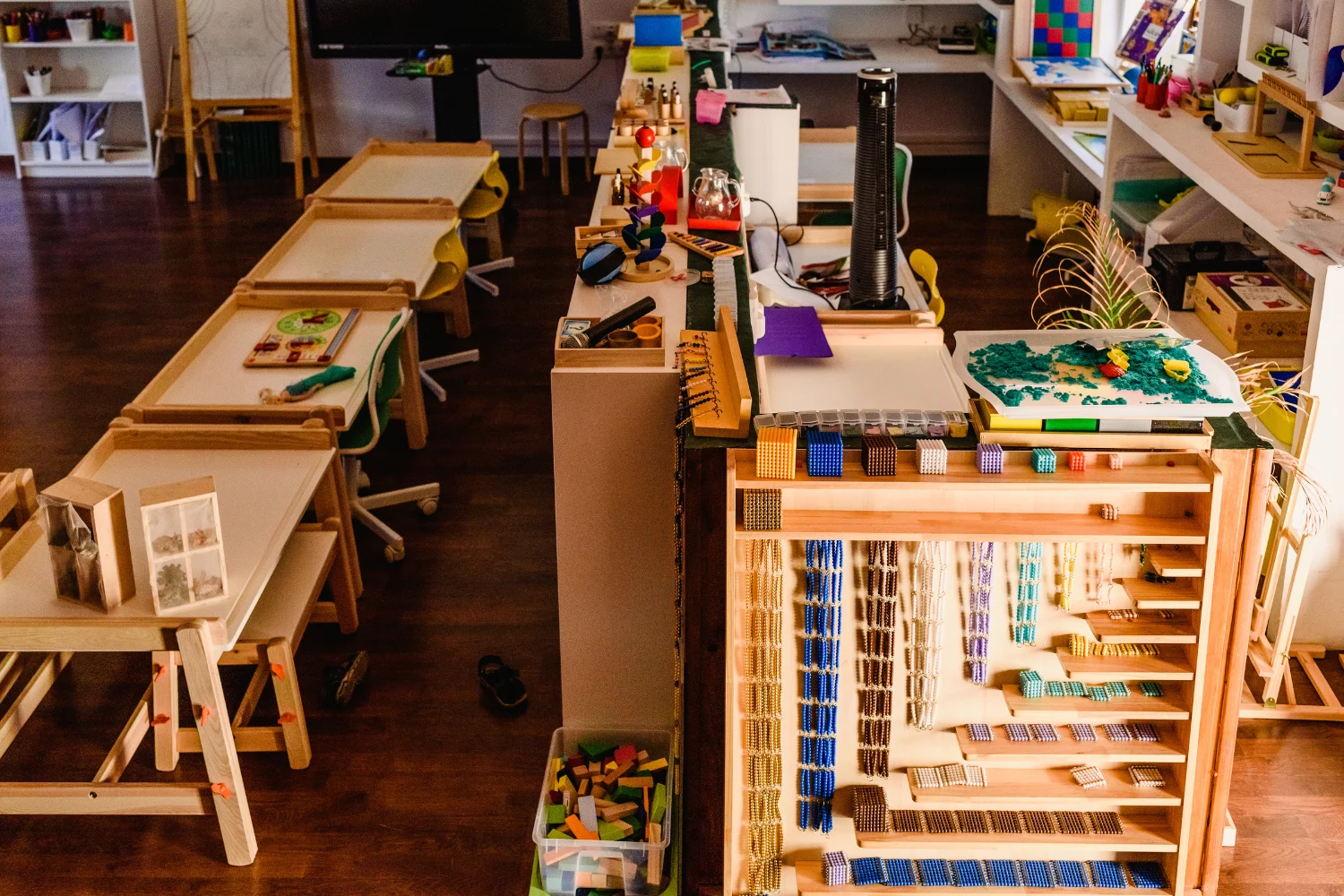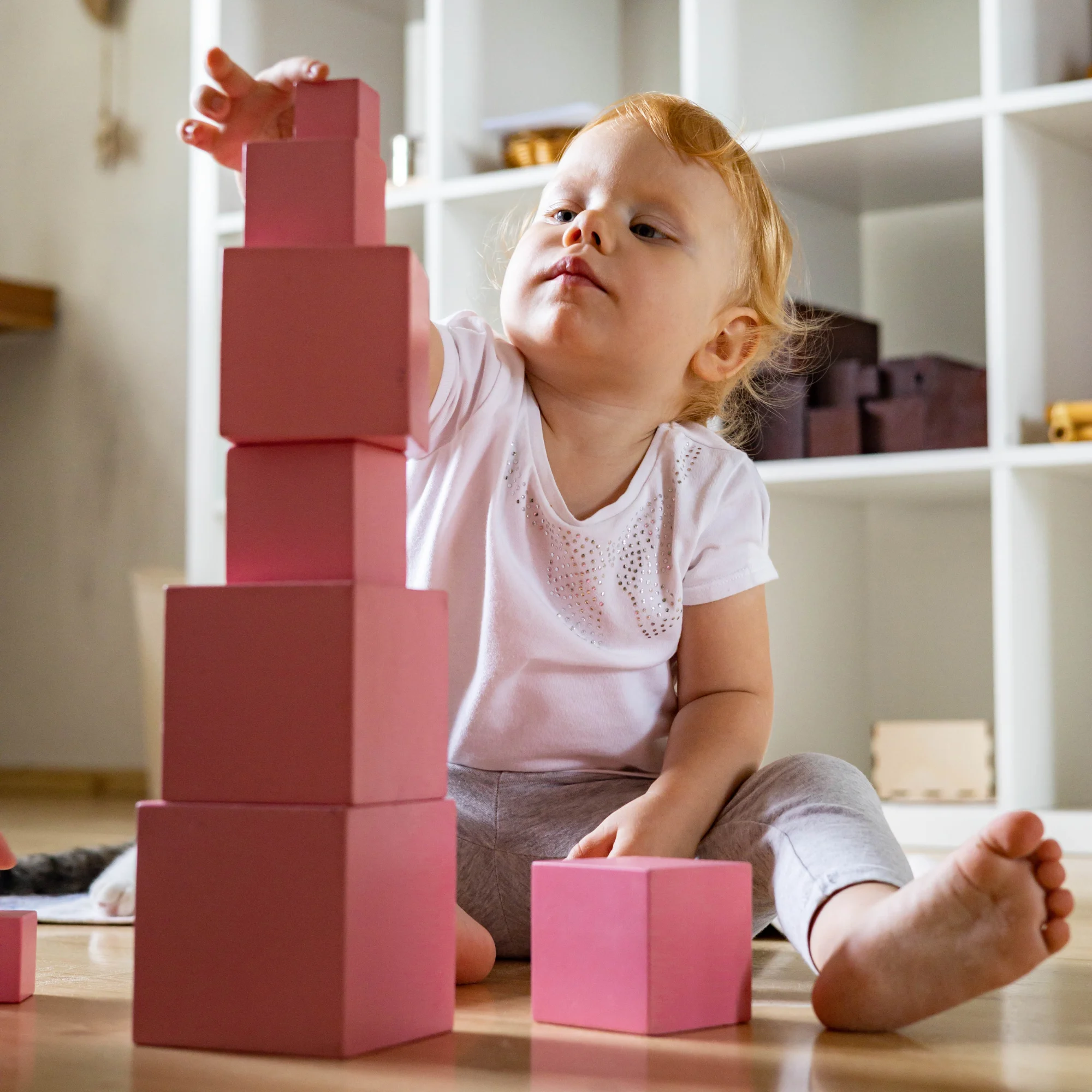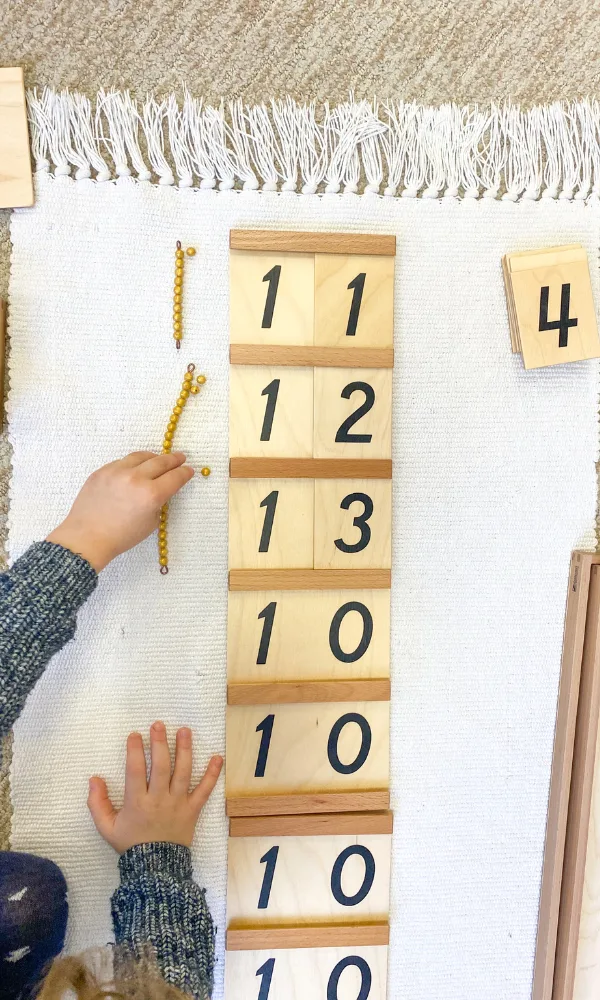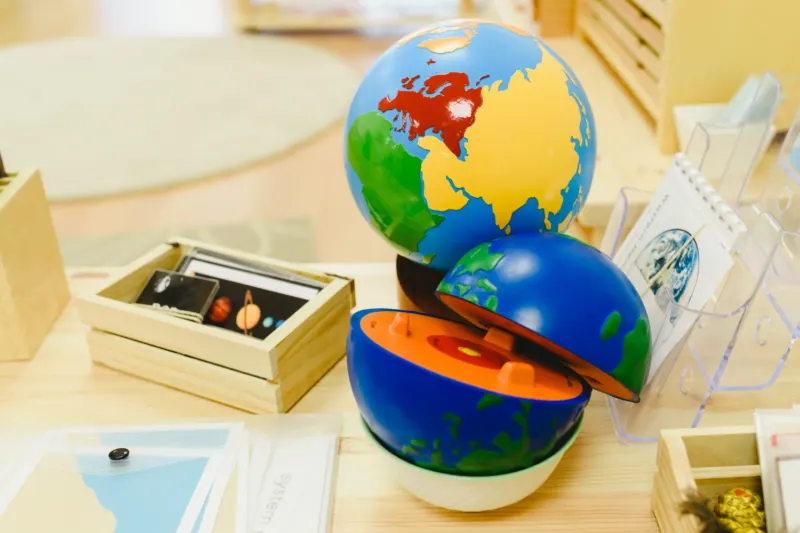I earn commissions from my affiliated links. Please see my disclosure policy for more details.
Are you a teacher or parent looking to outfit your classroom with the best materials that support children’s learning? Look no further than Montessori materials! Montessori focuses on building independence through structured activities and quality equipment.
From customized shelving to hands-on learning tools, there are essential Montessori materials every classroom needs in order for students of all ages to feel empowered.
Read on to discover how equipping your environment with these items can easily transform it into a space that encourages creativity and critical thinking. This guide will provide you with a list of essential Montessori materials for various areas of the classroom, including practical life, sensorial activities, and more.

What are Montessori Materials?
You’ve probably heard whispers from fellow teachers or seen parents rave about them on social media. Heck, if you’re a homeschooler, chances are you’ve already been bitten by the Montessori bug! But for those out of the loop, here’s the 101.
Montessori materials include a collection of high-quality often expensive educational tools, brimming with color, texture, and function, specifically designed to spur curiosity and creativity in kids. They’re not your run-of-the-mill ABC flashcards or 123 posters. These materials are hands-on, interactive items that encourage kids to think outside the box, laying a solid foundation for lifelong learning.
Montessori materials are a set of educational tools and apparatus designed by Dr. Maria Montessori for the Montessori method of teaching. These materials are unique in their design, purpose, and usage.
They cater to various developmental stages of a child and are meticulously crafted to help the child independently explore and learn from the environment. The Montessori method emphasizes hands-on, self-directed learning, and the materials play a crucial role in this.

Key Characteristics of Montessori Materials
- Self-Correcting: The materials are designed so that children receive instant feedback from the material itself, rather than from an adult. This allows children to recognize and correct their mistakes independently, fostering a sense of autonomy and self-reliance.
- Sensory-Based: Many of the materials appeal to the senses and are designed for hands-on manipulation. This approach is based on the understanding that children, especially at younger ages, learn best through direct sensory experiences.
- Sequential and Ordered: The materials are often presented in a specific order of increasing complexity, enabling the child to build upon previous knowledge and challenge themselves at their own pace.
- Aesthetic Appeal: Montessori materials are often made of natural, high-quality materials like wood, metal, and glass, and are pleasing to look at and touch. The beauty of the materials attracts and engages the child.
- Isolates One Concept: Each material typically isolates one concept or skill that is to be learned, making it easier for the child to focus on and understand that specific concept.

Examples of Montessori Materials
- The Pink Tower: A set of ten wooden cubes of decreasing size, which the child stacks from largest to smallest. It introduces concepts of size and order.
- The Moveable Alphabet: Individual letters that children use for word construction, aiding in the development of writing and reading skills.
- The Number Rods: Wooden rods that represent the numbers 1 through 10 and help children grasp mathematical concepts.
- Sandpaper Letters: These are tactile letters that children trace with their fingers, connecting the physical movement with the sound and shape of the letter.
- Cylinder Blocks: Sets of wooden cylinders that vary in height and width, which the child places in the corresponding holes, developing visual discrimination of size.
- Golden Beads: These are used for teaching the decimal system and basic arithmetic operations like addition, subtraction, multiplication, and division.
- Geometric Solids: Three-dimensional shapes that introduce children to geometry.
- Bead Cabinet: Beads used for skip counting, multiplication, and square/cube roots.
The above examples are just a snapshot of the vast range of Montessori materials available for different age groups and subjects. Each material is purposeful and targets a particular developmental need or academic concept, making the Montessori method a holistic approach to education.

Top Montessori Materials
Why are these materials all the rage? Let’s peel back the curtain and look at some standout pieces.
- Sensorial Tools: Talk about a feast for the senses! From the iconic Pink Tower to the Geometric Solids, these tools are all about teaching kiddos to touch, feel, and understand the world around them.
- Math Materials: Say goodbye to yawn-worthy math lessons! With tools like the Bead Cabinet and Golden Bead Material, arithmetic becomes a hands-on, engaging affair.
- Language Materials: Forget rote learning! Enter Sandpaper Letters and Movable Alphabets. These tools make language learning tactile and fun, giving children a head start on reading and writing.
- Geography Materials: Beautiful wooden map puzzles and continent boxes engage kids in their learning. Weaving in culture along with hands-on materials is key.
Practical Life Materials
Practical life materials help children develop skills for everyday tasks such as pouring, buttoning, and tying shoelaces.
Practical life materials are an essential part of the Montessori classroom. These materials help children develop important skills for everyday tasks and promote independence. Some examples of practical life materials include pouring activities, buttoning frames, and tying shoelaces.
By using these materials, children can practice and refine their fine motor skills, hand-eye coordination, and concentration. They also learn important life skills that will serve them well in their daily lives.

Sensorial Materials
Sensorial materials engage the senses and help children refine their perception of size, shape, color, texture, and sound.
Sensorial materials are a crucial component of the Montessori classroom. These materials allow children to explore and refine their senses, helping them develop a deeper understanding of the world around them.
Examples of sensorial materials include the pink tower, which helps children understand size and dimension, and the color tablets, which help children differentiate between different shades and hues. By engaging with these materials, children develop their sensory perception and enhance their cognitive abilities.
Language Materials
Montessori classrooms have a variety of materials to support language development, including sandpaper letters, movable alphabets, and language cards. These materials are designed to help children learn letter sounds, phonics, and spelling.
Sandpaper letters provide a tactile experience for children as they trace the shape of each letter, helping them develop muscle memory and letter recognition. The movable alphabet allows children to manipulate letters and create words, fostering their understanding of phonics and word formation. Language cards provide visual cues and vocabulary-building through multi-sensory approaches.

Math Materials
Montessori math materials introduce concepts such as counting, addition, subtraction, multiplication, and division in a hands-on and concrete way.
Montessori math materials are designed to help children develop a deep understanding of mathematical concepts through hands-on exploration. The golden beads, for example, introduce the concept of place value and allow children to physically manipulate and visualize numbers.

The bead stair and number rods help children understand the concepts of quantity and number sequencing. The spindle box and number cards provide opportunities for counting and numeral recognition. With these math materials, Montessori classrooms create a concrete foundation for mathematical thinking and problem-solving skills.

Geography & Cultural Materials
These materials expose children to different cultures, geography, history, and science. They include maps, globes, puzzles, and artifacts from around the world.
Cultural materials are an essential part of a Montessori classroom, as they help children develop an appreciation and understanding of different cultures, geography, history, and science. Maps and globes allow children to explore and learn about different countries and continents.

Puzzles featuring landmarks or cultural symbols help children develop problem-solving skills while also exposing them to different cultures. Artifacts from around the world, such as traditional clothing or musical instruments, provide a hands-on experience and spark curiosity about different cultures.
By incorporating cultural materials into the classroom, Montessori educators create a rich and diverse learning environment for their students.
